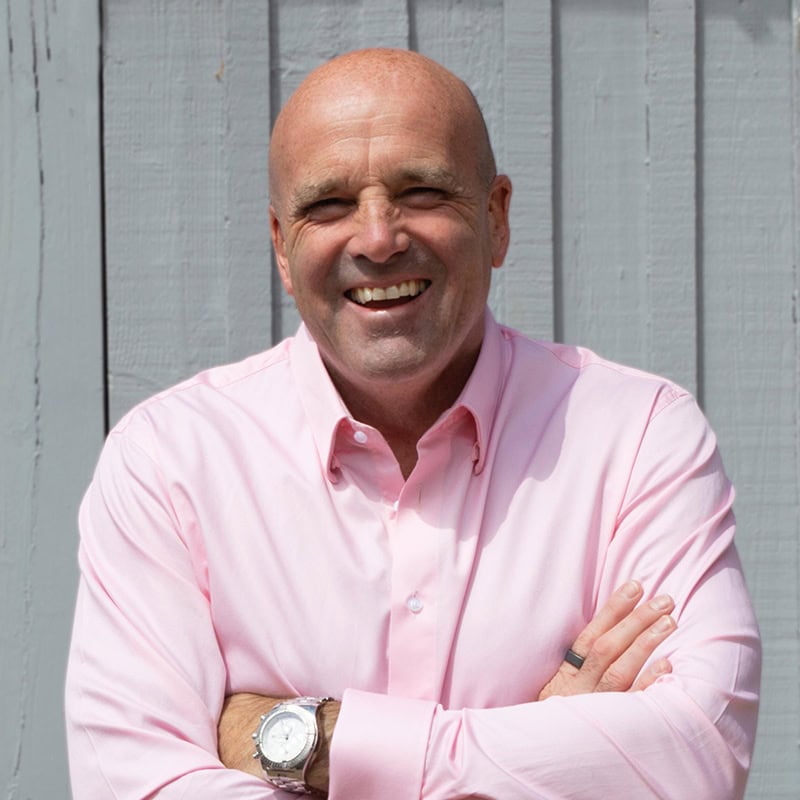Quick Summary
Stop chasing frameworks. Real accountability comes from a culture of integrity, ownership, clarity, safety, and purpose, not control or reminders.
Takeaways
-
Accountability is an outcome of culture, not a system you can impose with frameworks or tools.
-
Integrity and ownership—starting with leadership—are the bedrock of high-performing teams.
-
Clear goals, psychological safety, and shared purpose make accountability natural, not forced.
-
If you’re constantly enforcing accountability, the real issue is likely your culture, not your team.
If you’re still chasing “accountability” with yet another framework, you’re doing it wrong. Founder-CEOs love to roll out new systems to “drive accountability” – fancy goal charts, pop-up reminders, dashboards galore. Newsflash: it’s all bollocks. You can’t spreadsheet your way to a culture of ownership. Accountability isn’t an app you install or a KPI you nag about. It comes from people who give a damn, plain and simple. If your team only performs when prodded, you’ve already lost the plot. It’s time to stop playing accountability police and start building a culture of integrity and ownership that makes high performance inevitable.
The truth is hard to swallow but liberating: accountability is an outcome, not an input. It’s the result of a healthy culture, not the cause. Instead of fixating on accountability as a thing to enforce, focus on the environment you create. In my experience coaching growth companies, the highest-performing teams aren’t the ones with the slickest accountability chart – they’re the ones with integrity, radical ownership, crystal-clear outcomes, psychological safety, and a shared purpose.
The broken “accountability” playbook
Most executives mean well when they push for accountability. But the typical playbook is broken. Here are the common leadership behaviours that perpetuate weak accountability cultures:
Fuzzy goals and vague commitments: Leaders set targets that are as clear as mud. “Increase customer satisfaction” – what does that even mean? When goals are vague or constantly shifting, no one can truly be accountable. As Patrick Lencioni highlights in Five Dysfunctions of a Team, “fake harmony” leads to fake commitment – people nod along to avoid conflict but have no intention of delivering. Accountability can’t thrive in a fog of ambiguity.
Over-engineered frameworks: In a panic, leaders install heavyweight frameworks – cascading KPIs, RACI matrices for every task, 17-step performance checklists. It’s management theatre. A framework might clarify roles, but it won’t instil care. Over-engineering accountability often signals you’re compensating for a culture that’s lacking it at the core.
Tolerance for underperformance: Perhaps the deadliest behaviour is doing nothing – letting missed deadlines and mediocre work slide. Every time you tolerate an excuse or ignore a broken commitment, you set a new, lower standard. It’s like raising kids: if there are no consequences for bad behaviour, the behaviour multiplies. The standard you walk past is the standard you accept.
You cannot sprinkle accountability on a team like magic dust. Chasing it explicitly – through fear or fancy process – is a fool’s errand. Accountability is earned through culture, not demanded through control.
Integrity starts at the top (walk your talk)
Accountability’s foundation is integrity. That means doing what you said you’d do – even when nobody’s watching. If your people have integrity, you don’t need to badger them to honour commitments. They want to, because it’s who they are.
Crucially, integrity has to start with you, the CEO. If you preach accountability but don’t practise it, forget it. Your team has an incredible radar for inconsistency. As leadership coach Mark Green bluntly put it on one of our podcasts, “If you’re the CEO and you think people should get to meetings on time, yet you don’t, that’s never going to create a culture of accountability.” People do what they see.
Integrity in a team context also means peer integrity – teammates holding each other accountable because they respect each other and the mission. In truly cohesive teams, nobody wants to let the group down. They call out lapses not to play blame games, but to uphold the standard they all believe in. This kind of mutual accountability is powerful. It creates a unity where mediocrity finds nowhere to hide.
Radical ownership: no excuses, no passengers
If integrity is the foundation, ownership is the frame of the house. I’m talking about extreme ownership – a no-excuses mindset where each person says, “The outcome lives or dies with me.” In a culture of ownership, there are no finger-pointing blame games when something goes wrong. The question isn’t “Who screwed up?” but “What can I do to fix this?”
This mentality was popularised by Jocko Willink’s Extreme Ownership and it absolutely holds water in business. When everyone on your team takes full ownership of results, magic happens. Problems get solved at the source. Silos break down.
Practically, building radical ownership involves key shifts:
- Clear, singular accountability: When everyone owns something, no one really owns it. Make one person “owner” of each key outcome – their name is on it.
- Lead by example in owning mistakes: When things go wrong, do you defend and deflect, or model ownership by saying “It’s on me”? Show vulnerability as a leader to build credibility.
- Push authority downward: Don’t make every decision; empower those closest to the problem. Trust them first, coach them second, and only audit third.
A culture of radical ownership feels electric. You’ll hear “I’ve got it” instead of “Not my department.” Problems are raised with proposed solutions attached. That’s the dream, and it’s entirely achievable.
Clarity of outcomes: no more fuzzy targets
If your team doesn’t have blinding clarity on what success looks like, good luck holding anyone accountable for achieving it. Clarity is a prerequisite for accountability.
Every team member should know exactly what result they are responsible for, and what the key metrics or deliverables are. Not “improve X” but “achieve X by Y date measured by Z.” In coaching sessions, I often find that a so-called accountability issue is really an ambiguity issue – people aren’t dropping the ball, they’re juggling ten balls because no one clarified which ones are actually important.
One solution is Objectives and Key Results (OKRs). When used right, OKRs force clarity: Objective = What we want; Key Results = How we measure it. Instead of “increase customer satisfaction,” an OKR would be “Improve NPS from 45 to 60 by Q4” with a specific owner’s name attached.
Also crucial: make goals and progress visible to the whole team. Public scoreboards can motivate people to stay on top of their commitments. In high-performance cultures, it’s the team that notices a lagging metric and rallies to support the owner.
Finally, clarify priorities. A company chasing 20 goals usually achieves none. Focus on the critical few outcomes that matter most .
Psychological safety: the courage to tell the truth
It may sound counterintuitive, but the softer the culture, the harder the accountability. By “soft” I don’t mean weak – I mean a culture high in trust, respect, and psychological safety. In such an environment, people feel safe to speak up, admit mistakes, challenge each other, and ask for help.
Psychological safety was coined by Harvard’s Amy C. Edmondson, and Google’s Project Aristotle study found it to be the number one factor in high-performing teams. When there’s trust and respect, teams can take risks and innovate. When there isn’t, people play it safe and cover their backsides.
Creating psychological safety is primarily about leaders encouraging candour and rewarding honesty. Kim Scott’s concept of Radical Candour fits perfectly here – caring personally while challenging directly. You want a team culture where people can call each other out, including calling you out as CEO.
Another pillar is zero tolerance for blame culture. When something goes wrong, react with curiosity, not criticism. Ask why and how we can learn, not who to punish. If people see their boss scapegoating someone, they’ll clam up. In contrast, if you consistently reward truth-telling – even when the truth is bad news – you’ll hear about issues early, when they’re fixable.
Purpose: give them a damn good reason
People will move mountains when they care about why they’re doing it. True accountability flourishes when your team finds meaning in the mission.
As a founder-CEO, you have an inspiring vision beyond just making money. Don’t keep that to yourself. Communicate it constantly. Tie each team and role back to the bigger picture: how does this work improve customers’ lives, advance an innovation, build a legacy? When people see the impact of their contributions, their sense of ownership skyrockets.
Dan Pink famously distilled intrinsic motivation down to autonomy, mastery and purpose. Purpose is the key to making work fulfilling. Human beings want to do meaningful work, get better at it, and have some control over how they do it. If you supply those conditions, you hardly need to “enforce” anything – people will drive themselves.
A team that truly believes in the why will hold themselves accountable to incredibly high standards, because failing is no longer just missing a target – it’s letting down a mission they believe in.
From accountability theatre to a culture of results
Here’s the irony: when you get these cultural elements right – integrity, ownership, clarity, safety, and purpose – you almost stop talking about accountability. You simply talk about results and improvement, because everyone is already pulling their weight.
If you’re a founder-CEO frustrated that you’re the only one driving accountability, it’s time to examine your culture. Are you relying on carrots and sticks when you should be investing in trust and meaning? The hard truth is that accountability problems are leadership problems .
The good news: culture is fixable. Start with your executive team. Build trust and peer accountability there first. Hold each other to high standards in that room, and it will cascade. Clarify your vision and values ad nauseam. Encourage feedback at all levels.
A culture of integrity is not warm-and-fuzzy niceness. It’s actually quite hardcore: it means people do what they said they’d do, every time, and feel personally accountable to their colleagues. This kind of culture produces insane results.
So the next time you find yourself lamenting a “lack of accountability” on your team, don’t rush to implement a new tracking tool. Pause and look in the mirror. Are you seeing integrity? Ownership? Clarity? Openness? Purpose? If not, that’s your work. As the leader, it’s your job to till the soil where accountability grows.
At the end of the day, you shouldn’t have to chase people to do their jobs. If you do, something’s fundamentally broken. Build that team. Create an environment where everyone owns it and says “I’ve got this” – and actually delivers. Ditch the accountability theatre and do the real, deeper work of culture-building. The results will speak for themselves.
Written by business coach and leadership coaching expert Dominic Monkhouse. You can order your free copy of his book, Mind Your F**king Business here.

